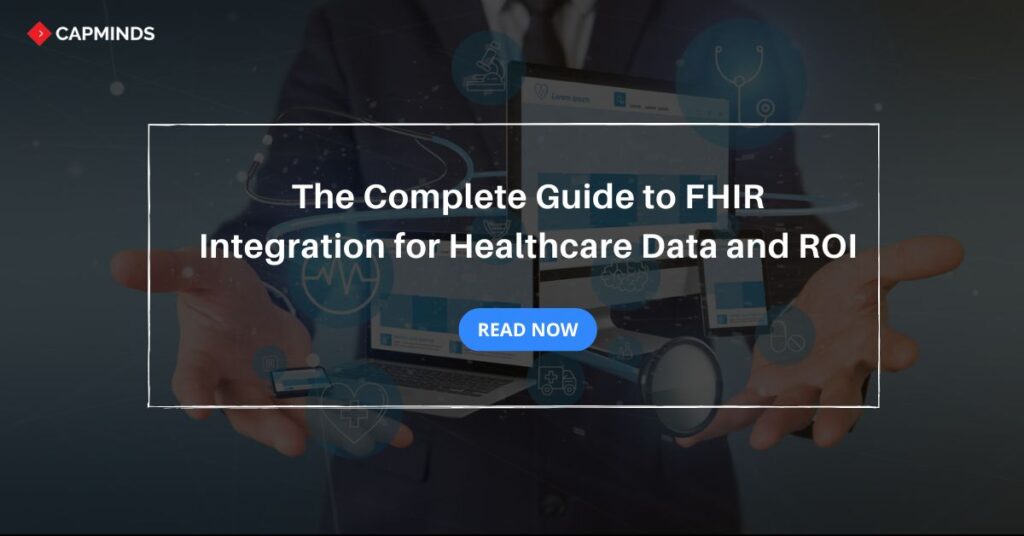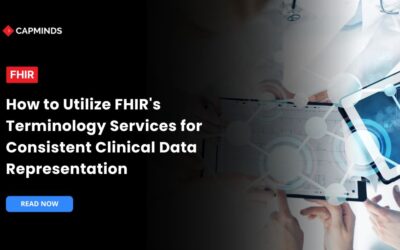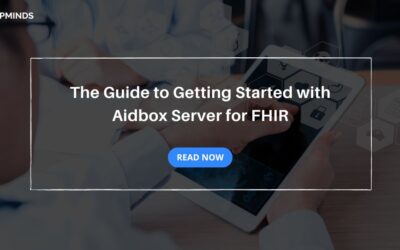The Complete Guide to FHIR Integration for Healthcare Data and ROI
Modern Healthcare demands seamless data sharing to ensure efficiency for all operations. Fast Healthcare Interoperability Resources stands as a powerful standard for health interoperability.
The percentage of respondents who named EHR vendors as FHIR adapters increased from 63% in 2023 to 79% in 2024. If you want to integrate FHIR into your healthcare practice, this blog post might help you. In this blog post, you’ll learn about FHIR Integration Models for healthcare systems, leveraging SMART on FHIR, Steps for successful FHIR integration, and how FHIR impacts ROI.
What is FHIR?
Fast Health Interoperable Resource is a standard created by HL7 and aims for the exchange of health data. The primary aim of this standard is to ensure that health systems can share patient demographics, medications, allergies, lab results, radiology, and others with safety information interchange. FHIR is built on modern web standards like RESTful APIs, JSON, and XML.
FHIR offers a flexible structure for handling different healthcare data. Here are some important aspects to know about FHIR healthcare standards:
- Interoperability for healthcare data
- Uses RESTful APIs for HIE
- Supports XML/JSON formats
- Resource-based health model
- Modular, customizable components
- Widely adopted globally
- Enables secure data sharing
Related: The Beginners Guide to Getting Started with FHIR on OpenEMR
Importance of FHIR in Modern Healthcare
Modern healthcare has drastically shifted to digital. When it comes to digital solutions, a seamless sharing of health data between healthcare systems is important.
This is where FHIR comes in and plays a pivotal role. It acts as a bridge between legacy systems and emerging healthcare systems. FHIR allows a seamless integration and enhances data accessibility for providers. Adopting FHIR means healthcare organizations can improve patient outcomes, streamline operations, and comply with regulatory regulations.
FHIR Integration Models for Healthcare Systems
FHIR offers several integration models; Systems can adopt FHIR as a standalone module, integrate it with existing applications, or build a new native FHIR-based platform.
Choosing the right model depends on the organization’s goals, current infrastructure, and long-term scalability.
1. Integrating FHIR API with Existing Systems
- Integration of FHIR API with existing systems can allow providers to utilize interoperability without overhauling legacy applications.
- This approach enhances the functionality of current systems by embedding FHIR APIs.
- It makes it easier for a secure exchange of data with minimal or no disruption.
- Organizations benefit from the streamlined transition to FHIR.
- FHIR helps with real-time data access and improves connectivity between systems.
2. Building a Native FHIR System from Scratch
- Building a native FHIR system aims to fully harness the FHIR potential.
- Such systems are designed to incorporate FHIR as the core architecture, providing native support for healthcare data exchange.
- Building from scratch ensures optimal compatibility with FHIR resources.
- And also it helps to simplify resources and compliance with regulations.
Related: The Basic Guide to Integrating Your Healthcare Data Architecture with FHIR
Leveraging SMART on FHIR for Enhanced Functionality
SMART on FHIR extends FHIR with a means to construct health-related applications that can engage with other EHRs safely. Using SMART on FHIR, groups may develop apps for functionalities, such as patient portals, provider-specific tools for clinical decision support, and population health management.
This allows for innovation through added functionality to existing systems on top of the main system itself by health providers.
Related: How to Leverage SMART on FHIR with Athenahealth EHR for Streamlining Data Communication
Steps for a Successful FHIR Integration
A strategic approach is essential for successful FHIR integration. Following the below steps:
1. Planning and Roadmap Development
A successful integration of FHIR requires a clear planning and roadmap. A clear roadmap and planning phase outline the integration scope, resource requirements, timelines, and risks.
This stage includes:
- Assessing current systems
- Defining integration objectives
- Creating a phased implementation plan.
Carefully planning the entire integration process will ensure reducing the risk of any sort of conflict, aligning stakeholders, and setting a realistic timeline.
2. Aligning with HIPAA and Security Standards
As the patient data involved in FHIR are sensitive, it demands strict alignment with security standards such as HIPAA. Ensuring that FHIR APIs comprise data protection regulations will prevent organizations from those breaches and get them more patient trust.
Security design must be addressed through authentication, encryption, and secure API gateways for compliance with regulatory requirements.
3. Testing and Validation of FHIR APIs
Proper and comprehensive testing is a must to ensure a tight FHIR integration. Testing will ensure all the APIs work correctly, process data correctly, and the requirements are satisfied.
Different cycles of testing identify bugs early so teams can fill up functionality gaps, security vulnerabilities, and performance bottlenecks for further data integrity protection and optimization.
How FHIR Impacts ROI for Healthcare Organizations
FHIR achieves efficient data sharing that helps in ROI improvement through operational saving and quality improvements in patient care.
1. Reducing Operational Costs
- FHIR integration helps in cutting down the cost of business operations as it makes processes simple and minimizes the use of manual data entries.
- Increased interoperability and data sharing between various systems make its redundancy less; it takes less time to access critical information, improving resource allocation and efficiency in operational workings.
2. Enabling Value-Based Care
- FHIR will thus enable access to full patient information, and it will support value-based care initiatives.
- FHIR helps improve patient outcomes and reduce waste in healthcare by supporting coordinated and informed care.
- Value-based care models work on timely data sharing: hence, FHIR is an asset for the transition to outcome-focused care.
3. Improving Workflow Efficiency and Patient Satisfaction
- FHIR has improved the workflow efficiency of sending and receiving data and has streamlined the decision-making process by making it faster, and data-driven.
- It promotes better patient experiences since the reduction in waits and improvement in communication streamline the processes between care providers.
- As a result, the patients experience an increase in satisfaction due to increased responsiveness and accessibility of care.
CapMinds HL7 FHIR Service for Healthcare Practice
CapMinds offers the best all-in-one health interoperability solution for healthcare practices. Our HL7 FHIR service will understand your clinical needs and requirements to cater to our solution. We have years of experience in this field faced many challenges and tackled them with ease.
However, FHIR implementation is often associated with challenges, and CapMinds will help you to navigate all the challenges. Why can CapMinds be your Go-to Interoperability Solution?
- We are experienced professionals with years of experience in the field.
- Our technical team is an expert who will analyze your healthcare practice thoroughly to tailor the Interoperability solution.
- We prioritize safety, security, encryption, and authentication to protect your healthcare practice patient’s data.
- Our comprehensive solution ensures seamless interoperability adhering to industry standards, and using standard protocols.
- We offer comprehensive training sessions to healthcare staff.
- Our affordable health interoperability solution benefits healthcare practice at all levels.
If you are searching for the best interoperability service for your practice, CapMinds is your choice. We can assist you by navigating all potential challenges and ensuring seamless health data exchange.
“Reach out to CapMinds Health Data Exchange Solutions for your Healthcare Practice”.




